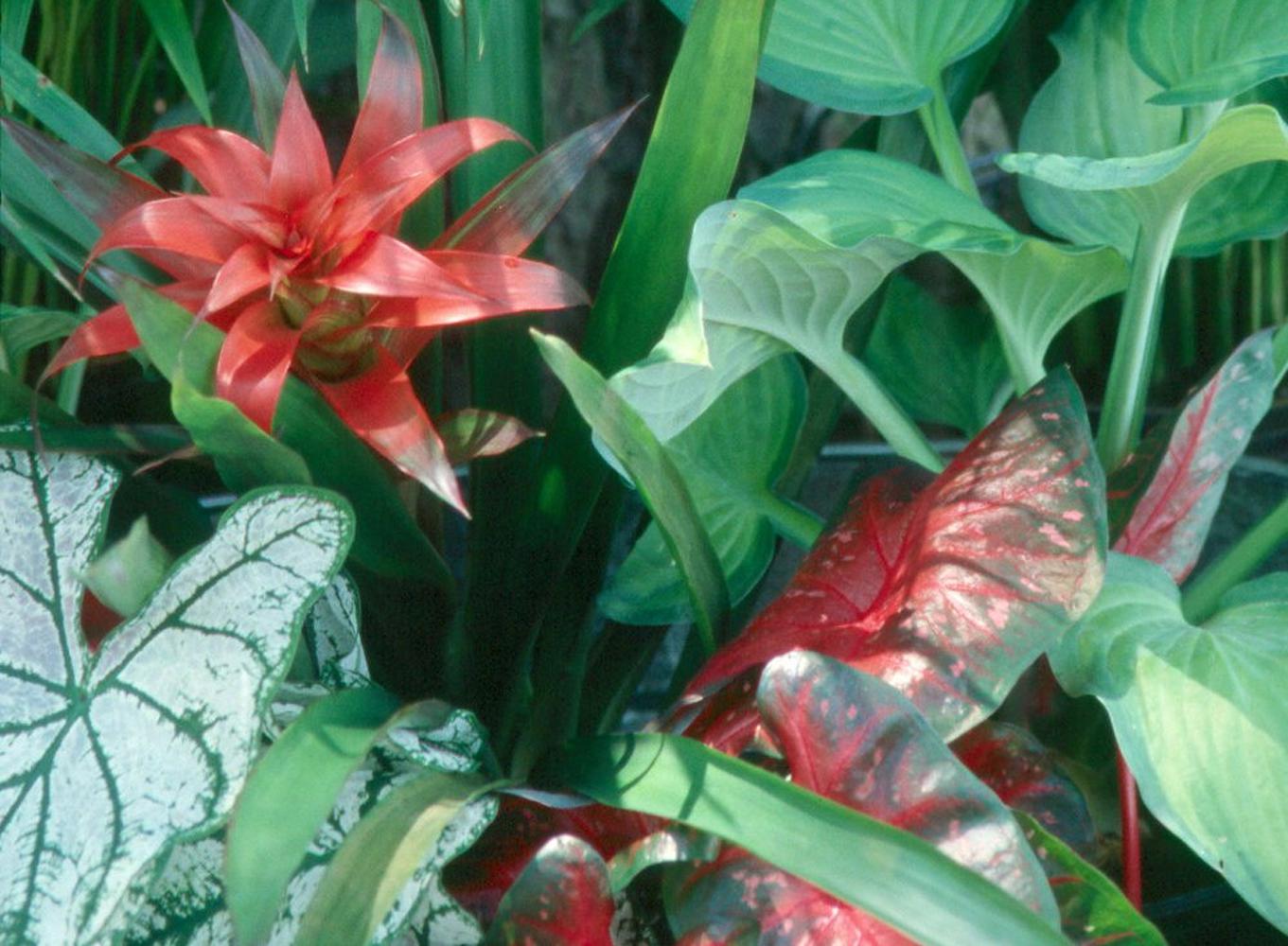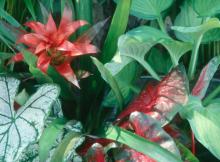Information Possibly Outdated
The information presented on this page was originally released on January 14, 2002. It may not be outdated, but please search our site for more current information. If you plan to quote or reference this information in a publication, please check with the Extension specialist or author before proceeding.
Bromeliads improve winter's grouchiest
By Norman Winter
MSU Horticulturist
Central Mississippi Research & Extension Center
This time of the year tends to make me a little grouchy, especially when I wake up to 16 degrees outside. My complaining makes gardeners from the north start tuning up for a chorus of "My Heart Bleeds for You." This season will make me love spring all the more, but when August comes, I will whine about the oppressive heat and humidity.
Those of you with greenhouses and bright sunrooms should rejoice while the rest of us who want pretty plants this time of the year are relegated to indoor types. There is a group of overlooked and misunderstood plants that we can all enjoy this time of the year and get a little taste of the tropics. They are bromeliads.
Strangely enough, there are bromeliads we are all familiar with such as the pineapple, the symbol of hospitality, and Spanish moss, which you are more likely to see growing in South Mississippi than pineapples.
Bromeliads come in a wide variety of bloom shapes, sizes and colors, and they really are easier to grow than many think. They are great plants for two main reasons: the showy foliage and the bloom that is really a group of bracts. Bracts are those modified leaves like poinsettias, bougainvillea, bird of paradise and dogwoods all have.
Many of the bromeliads sold are epiphytic, which simply means their roots are used for anchoring instead of for water and nutrient up-take. With these bromeliads, we keep the soil slightly moist. Most of these plants have leaves that form a natural cup, or urn, that is to be kept filled with fresh water.
Bromeliads that are not epiphytic are treated more like regular houseplants, so talk to your nurseryman about what you are buying. Most bromeliads sold around the state are native to the rainforest. Many of you probably worry about providing the right amount of light for the bromeliad.
A pretty good rule of thumb to remember is that the thicker, scaly leaves -- many of which are grayish -- come from areas with brighter light. Those scales protect them from the intense sun and also absorb water and nutrients. These bromeliads need the brightest area of the house. Those with shiny, glossy leaves come from the lower canopy or floor of the rainforest and can tolerate lower light conditions indoors.
There are thousands of bromeliads, but four of the easiest to grow and easiest to find are the Tillandsias, Vriesias, Guzmanias and Neoregelias.
Tillandsias are for the brighter indoor areas. Spanish moss is a popular southern Tillandsia. The more tropical Tillandsias are perfect for growing on an old piece of wood. They also are suitable for containers. My favorite is the Tillandsia cyanea which has a bloom the shape of a fish. Mist Tillandsias grown on tree trunks for their watering needs. My mom has this bromeliad growing for years on a piece of driftwood. The driftwood is on the windowsill facing east and without fail it blooms every year.
The Vriesia is another bromeliad for the brightest indoor areas. Keeping its cup filled with fresh water will give you a plant with a bloom that will last for weeks. It also has pretty foliage worth growing.
Guzmanias also have long-lasting flowers and striking foliage, but they require less light. I am partial to the ones with the star-shaped blooms. Some Neoregelias are terrestrial -- drawing their nutrients from their roots; some are epiphytic -- drawing nutrients through their leaves; most, however, require lower light. Almost all are grown for their exotically colored foliage.
Most bromeliads bloom only once, and the bloom lasts a long time. Before the plant dies, it will form side shoots called pups that can be separated for starting new plants. It may take years for your particular species to bloom again. The bloom is so striking that it is worth the wait and the celebration when it happens.
There is a bromeliad that will work well somewhere in your home, and now is a good time to start shopping.



